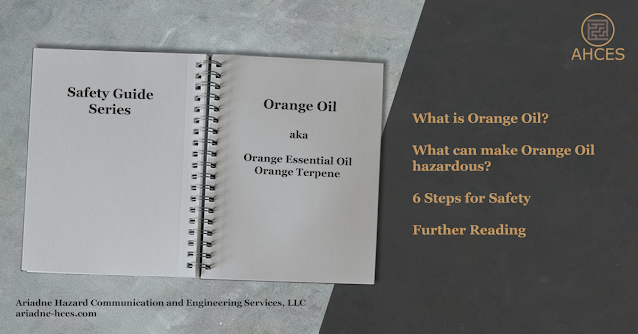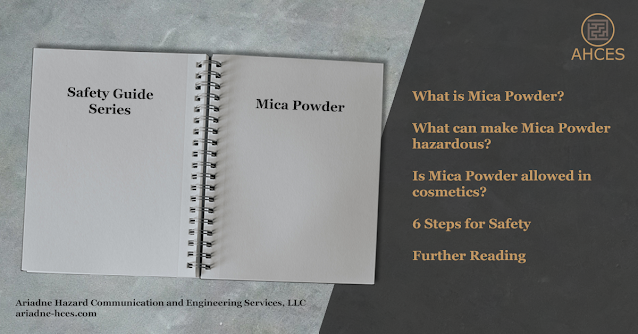Hydrochloric Acid Safety Guide
What is Hydrochloric Acid?
Hydrochloric Acid, also known as muriatic acid, is the aqueous solution of hydrogen chloride dissolved in water.
Hydrochloric acid has many uses, ranging from leather tanning and electroplating metals to heavy-duty cleaning applications.
Both hydrochloric acid, a liquid, and hydrogen chloride, a gas, have the CAS Number 7647-01-0.
Notable Properties of Hydrochloric Acid
For safety and handling purposes, hydrochloric acid and hydrogen chloride are often treated interchangeably.
Hydrogen chloride reacts readily with water vapor in air, forming vaporous hydrochloric acid. This reaction can also take place within the respiratory system, with inhaled hydrogen chloride forming hydrochloric acid when in contact with the moist parts of the airway and lungs.
Likewise, hydrochloric acid can give off irritating hydrogen chloride vapors.
Even with the overlap in hazards, there are still some different risks associated hydrochloric acid and hydrogen chloride.
What Makes Hydrochloric Acid Hazardous?
Hydrochloric acid is highly corrosive. Exposure to hydrochloric acid can cause severe skin burns and eye damage. Breathing in vapors of hydrochloric acid may also cause respiratory irritation.
When exposed to high heat, including in a fire, hydrochloric acid may give off hydrogen chloride.
Hydrochloric acid will also react exothermically, producing heat, when strong acid is diluted with water or when mixed with a basic substance.
What Makes Hydrogen Chloride Hazardous?
Hydrogen chloride is corrosive. Exposure to hydrogen chloride can cause severe skin burns and eye damage. Breathing in hydrogen chloride can cause severe respiratory damage.
When exposed to high heat, including in a fire, hydrogen chloride can decompose into hydrogen gas and chlorine gas, both of which are also highly hazardous.
Hydrogen chloride stored in a pressurized cylinder also has the hazards associated with gases under pressure.
Hydrochloric Acid and Hydrogen Chloride Frequently Asked Questions
Are hydrochloric acid and muriatic acid the same?
Yes, muriatic acid is another name for hydrochloric acid. The use of the name muriatic acid is common in pH adjuster products for swimming pools.
Can hydrochloric acid dissolve metal?
Yes, hydrochloric acid is considered corrosive to metals. It can dissolve aluminum, cast iron, carbon steel, copper, and titanium. Many stainless-steel alloys are also vulnerable to corrosion damage from hydrochloric acid.
Because of this, hydrochloric acid should not be stored in metal containers.
Is hydrochloric acid good for skin?
Hydrochloric acid is highly corrosive and can cause severe chemical burns. Hydrochloric acid should not be used for any form of chemical peel or other skin treatment.
Is hydrogen chloride the same as hydrochloric acid?
Hydrochloric acid is the aqueous form of hydrogen chloride. There is a strong overlap in the corrosive properties and safety risks between hydrogen chloride and hydrochloric acid.
6 Steps for Safety
Step 1: Read the Warnings
When working with a product for the first time, always read all the safety documents first. This includes safety data sheets, which should be provided by the manufacturer or importer of the hydrochloric acid or hydrogen chloride. There may also be an OSHA chemical label or a Consumer Protection label on the packaging of the hydrochloric acid or hydrogen chloride product. These documents all contain important information on the hazards of the product and instructions on how to mitigate those hazards.
Different compositions in different products may cause additional hazards to be present beyond the properties of plain hydrochloric acid or hydrogen chloride. Be sure to familiarize yourself with the differences between separate hydrochloric acid or hydrogen chloride products.
Step 2: Prepare Your Workspace
Creating a safe workspace, sometimes referred to as engineering control, is a key component of working safely with any potentially hazardous substance.
The hazards of hydrochloric acid and hydrogen chloride both involve corrosive properties. Be sure both storage containers and work surfaces are resistant to hydrochloric acid corrosion.
Due to the risk of caustic burns when working with hydrochloric acid, the ability to quickly wash off any hydrochloric acid that contacts the skin or eyes is very important.
Washing out the eyes can be done with an eyewash station. It is possible to purchase an attachment to a skink which will redirect water toward the eyes when opened. It is also possible to purchase sterile saline bottles designed for use as a portable eyewash.
Washing the skin will vary by the amount of contact. For a small area of contact, washing in a sink is sufficient. For a large area of contact, quickly drenching the whole body is necessary. For home settings, a hose or conventional shower should be sufficient. For industrial settings, an emergency deluge shower should be made available in most instances.
In any case, if hydrochloric acid has touched a significant amount of skin, or the eyes, emergency medical attention should be sought immediately.
Step 3: Gather Your PPE
For handling hydrochloric acid, you will need the
following PPE.
- Eye Protection
- Safety goggles which create a seal around the eyes are needed to prevent any liquid splashes or vapors from reaching the eyes.
- Open safety glasses, which do not have a sealing surface, will not work in preventing liquid splashes or vapors from reaching the eyes.
- Gloves
- Long, chemical resistant gloves are needed to prevent skin contact with the hands and forearms.
- Other Body Coverings
- Chemical resistant sleeves or an apron may also be necessary to prevent contact with hydrochloric acid.
- Closed toed shoes with a solid top (not tennis shoes) should be worn to prevent splashes from contacting skin.
Step 4: Clear Your Workspace
Having a clear workspace is an important part of safety. Clutter can cause accidents and can prevent you from noticing if something has spilled.
This is also a good time to double-check that any engineering controls, including eye and body washing stations, are working and readily accessible.
If you are working in a shared space, make sure anyone around you can also remain safe when you are working with hydrochloric acid or hydrogen chloride. For those working at home, this can include family members and pets.
Step 5: Do The Work
When appropriate safety measures are taken, including setting up a clear workspace and wearing PPE, hydrochloric acid and hydrogen chloride can both be worked with safely.
An important safety measure for hydrogen chloride is knowing how to safely dilute it. When diluting strong acids with water, which includes hydrogen chloride, always add acid to water, never the reverse. Mixing a strong acid with water produces an exotherm, producing heat. This heat can cause water to boil, producing steam and vapors which can be highly hazardous. Adding a smaller volume of acid to a larger volume of water minimizes this effect.
If work cannot be completed in one sitting, be sure to properly seal any hydrochloric acid or hydrogen chloride containers to prevent spills or accidental release when not in use.
Step 6: Clean Up
Use a dry, non-combustible material, such as clay cat litter, to soak up any spilled hydrochloric acid.
Be sure to dispose of any waste in accordance with local regulations, which can vary by State and county.
Further Reading
The National Library of Medicine has a PubChem article on Hydrochloric Acid.
Check out the Safety Guide Series Hub for more safety guides.
Sources Cited
Agency for Toxic Substances and Disease Registry (Feb. 10, 2021). Toxic Substances Portal for Hydrogen Chloride. Retrieved June 11, 2024 from https://wwwn.cdc.gov/TSP/substances/ToxSubstance.aspx?toxid=147.
Mayo Clinic (2024, March 13). Chemical Peel. Mayoclinic.org. Retrieved June 11, 2024, from https://www.mayoclinic.org/tests-procedures/chemical-peel/about/pac-20393473
National Center for Biotechnology Information (2024). PubChem Compound Summary for CID 313, Hydrochloric Acid. Retrieved June 11, 2024 from https://pubchem.ncbi.nlm.nih.gov/compound/Hydrochloric-Acid.
Rolled Alloys (n.d.). Hydrochloric Acid. Rolledalloys.com. Retrieved June 11, 2024, from https://www.rolledalloys.com/environments/hydrochloric-acid/





Comments
Post a Comment